Gusset plates have been with us for centuries. If you’re not a structural engineer, you probably will never notice the gusset plate. The article on IDEA StatiCa points out the importance of gusset plates in structural engineering, with a strong emphasis on their critical role in connecting various parts of a structure, such as beams and columns. It highlights the Importance of the plate in preventing Block Shear Failure . This is a common issue that arises in structural connections, showcasing IDEA StatiCa`s solutions to this issue and how it can be prevented through the tool.
What is a Gusset Plate?
A gusset plate can be easily designed shifty. All it takes is adding a piece of a rectangular metal sheet to the main beam and connecting the secondary members to this plate.
This is a simple example of a gusset plate. This is a simple example of this element because you connect one member under tension loading, or have enough space for all connection components. lastly, you may not need to consider these connections’ aesthetics. The complexity of the connection comes into play when there is a need to consider compression in members, whilst also considering the cost and visual aspect of the task.
What is the Gusset Plate and what is not?
For the eyes of the inexperienced, it can be hard to distinguish gusset plates (or gussets) from all the other steel components involved. Over the years, we have seen many individuals struggling to tell the difference between gussets and stiffness. So, what’s the difference?
Gusset: A crucial element in a structure, through which all the internal forces from the connected members are transmitted.
Stiffeners: This element plays a vital role in correcting connection stiffness, whilst avoiding plate buckling.
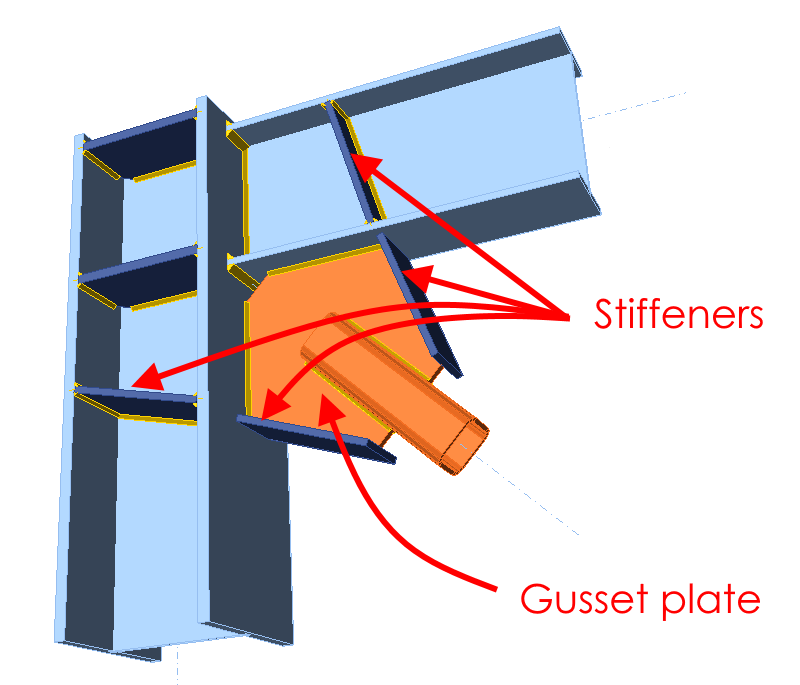
Furthermore, the best way to distinguish these two elements in simple words is that in the absence of gussets, the structure has the potential to collapse. However, in the absence of stiffeners, the structure will withstand.
Basic types of Gusset Plate Connection Arrangements
In the figure below, there is a typical transversal arrangement of gusset plates in the steel structure connections.
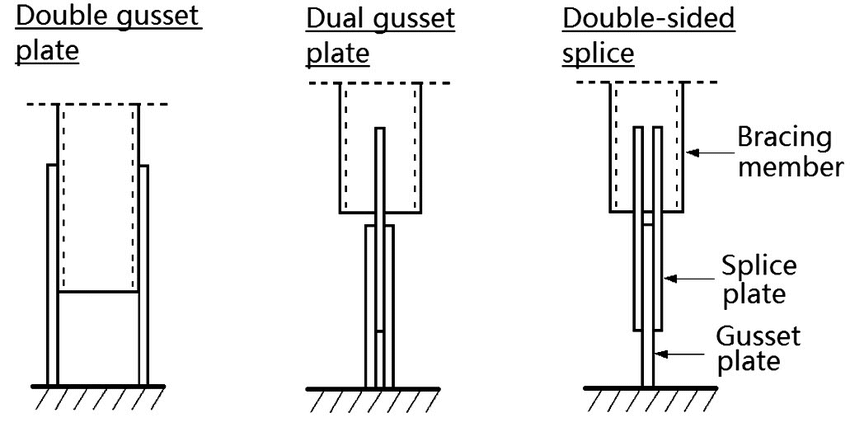
Gusset Plates for trusses
Additionally, the most common use of these plates could be found positioned in truss beams, and lateral bracing systems. In this system, they are positioned so that diagonal members can be via the gussets. This is illustrated in the figure below:
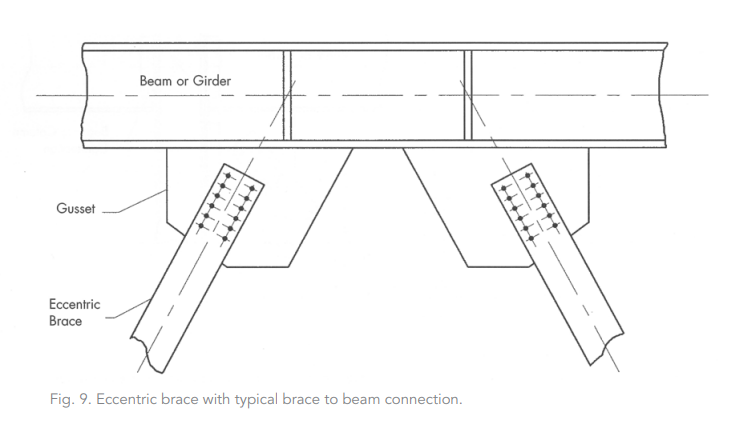
Why are Gusset plates important?
The term Gusset plate usually comes into the spotlight after a collapse of a structure or its parts. A great example of this can be demonstrated through The 2007 Interstate 35W Bridge collapse.
The collapse of the Interstate 35W Bridge was identified as the unsatisfied design of the truss beams’ gusset plates, and also the lack of inspections on connection parts that were carried out. This mistake was simply due to the belief that the gussets would not be the weakest point in the design, but rather be stronger than the beams that are connected via the gussets. Unfortunately, this belief led to the devasting event of the bridge collapsing.
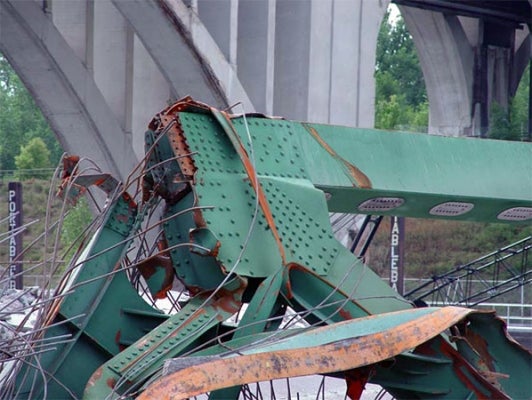
The design codes give engineers a direction on how to check the gusset plate connection design. Some examples of design codes that are associated with gusset plates:
- AISC 360-16 (United States)
- CSA-S16-09 (Canada)
- EN 1993-1-8 (European environment)
These manuals are based on an analytical approach, which is quite easy to apply but can be very time-consuming with the increasing number of connection types or alternatives.
The simplest elements to work with are tension members’ connections. However, engineers still have to do several various checks on gusset plates, such as checking the tension forces in the Whitemore cross-section.
How it looks on paper:
How it looks in real-life:
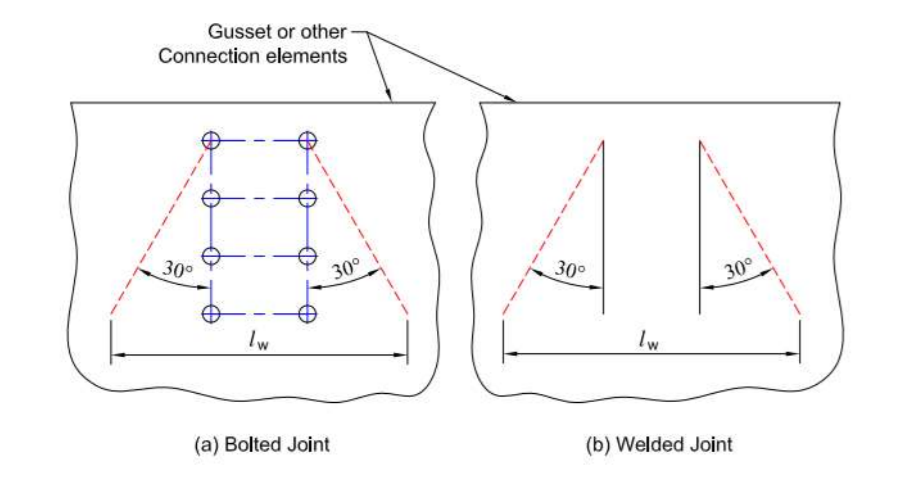

Another check that is run for this example structure is Block Shear Failure in a connection. This involves both shear and tension components. As a connection designer, it is crucial to check all possible shear failure paths associated with the bolt grids. This is aspect of Block Shear Failure is demonstrated in the image below:
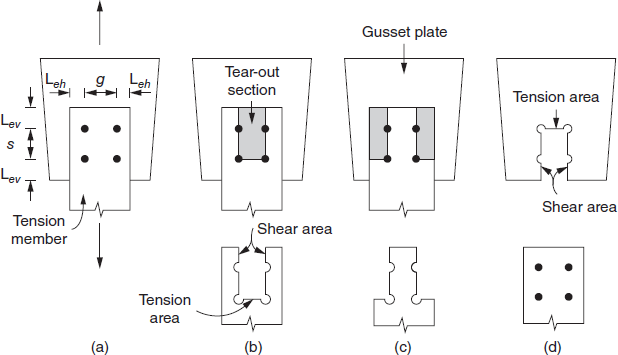
You can find one nicely prepared example of Block Shear Failure resistance assessment in this verification article.
Gusset Connection Design Complexity
The complexity of the gusset connection design changes when it is introduced to compression members. Even in this case, we still need to check all the Block Shear failures that can occur, and also inspect all the buckling problems that may arise.
A crucial parameter in the compression member connection design allows us to answer the question of would the member can or not sway out of the gusset’s plane. As this would influence the behaviour of the failure mechanism, including Block Shear Failure and the creation of the plastic hinges in the plates.
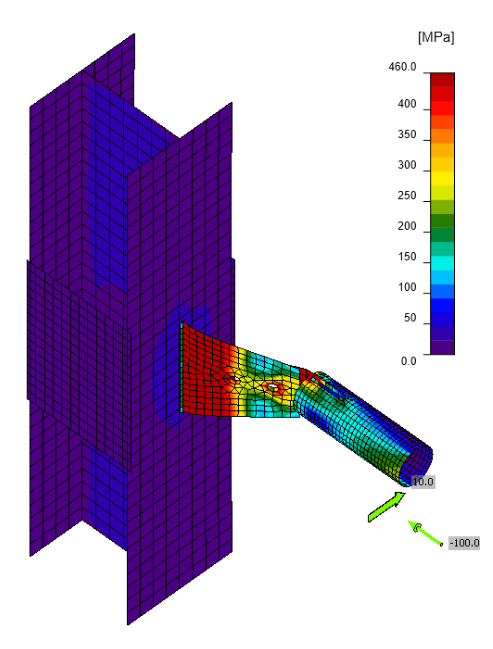
The failure modes for these two different situations are shown.
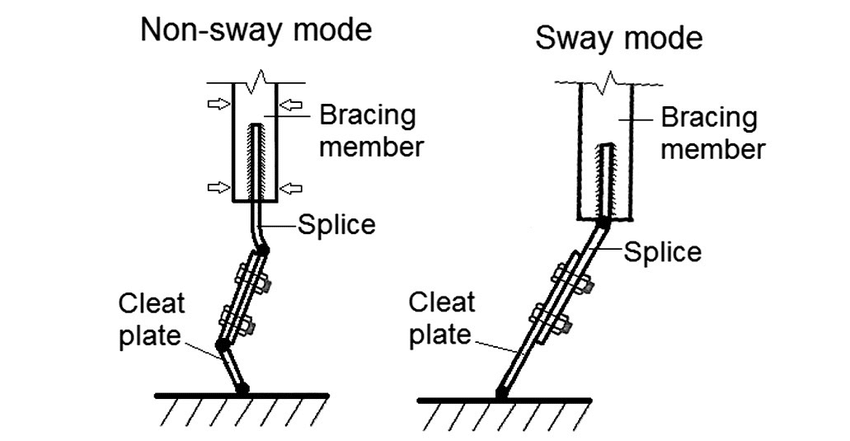
This could be solved by an analytic approach as well, but you’ll probably spend a lot of time with every single connection arrangement, including preventing Block Shear Failure, as addressed previously. More probably, the engineer will save precious time by simply avoiding this situation and will add some stiffeners. It’s an understandable, but costly solution.
IDEA StatiCa Connection Solution
In IDEA Connection, you can set this behaviour for every particular member simply by selecting the correct Model type.
Using some smart tool providing the stability check for such connections is another way. The buckling analysis is an elementary part of the IDEA StatiCa Connection app and provides you with buckling shapes and load factors for a user-defined number of shapes.
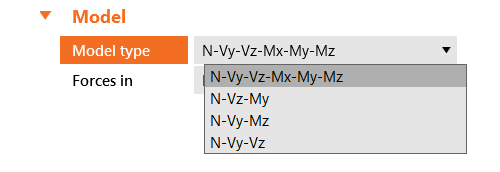
IDEA StatiCa Research into Gusset Plates
Moreover, in the IDEA StatiCa development research, there is no place for a trial & error approach. The methods that are utilised in the application and calculation models are verified via real structure testing and validated via reputable universities’ involvement.
A research that was dedicated to gusset plate connection design. The results of the tests were compared with the CBFEM modelling, showing a positive correlation. To find out more about this study, please click here.
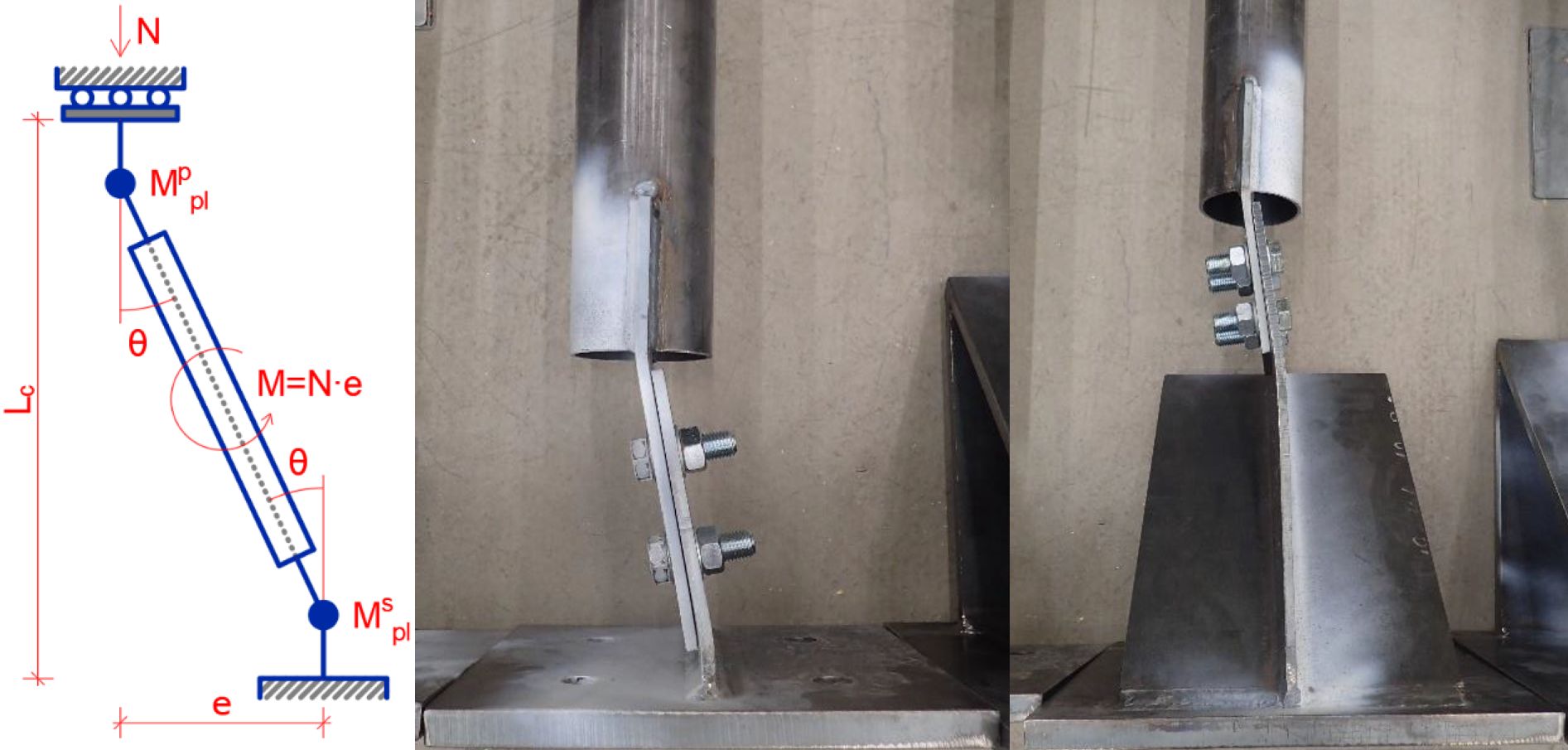
So the main questions to ask yourself are:
- What are your options when it comes to the need for connection design about designing standards, such as Eurocodes?
- When do you need your designs and checks, is it in months or within weeks?
- Do you also want to have your connections easily assembled and not cost a fortune?
The right answer to all these questions is IDEA StatiCa Connection. This is a 21st-century tool, that takes care of uncreative work for us.
You Ask We Answer – End Plate with Gussets
At the heart of this tutorial, we will introduce the topic of End Plate with Gussets. By the end of this comprehensive guide, you will not only have a firm grasp of the theory and principles behind beam-to-column connections but also gain practical insights into the fabrication process.
This knowledge will enable you to ensure that your projects meet the highest standards of safety and performance.
As engineers, it can be hard to calculate the price for every connection. However, via the IDEA StatiCa tool, this information is present seamlessly.
Additionally, to get a wider and more in-depth notion regarding cost calculation on IDEA StatiCa, please click here.
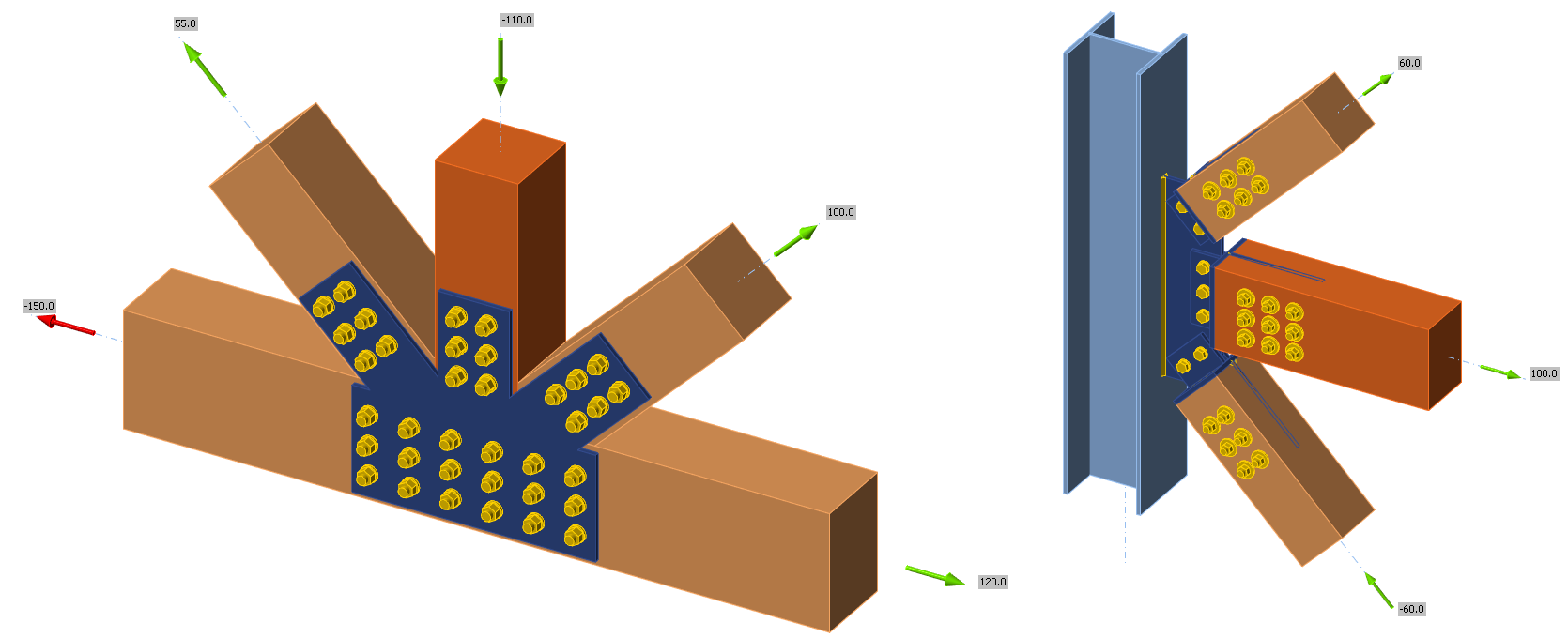
Due to the introduction of CNC machining into the civil construction workshops, the gusset plates have become one of the main ways to connect both steel and timber members as well. Moreover, instead of tailoring complex members and shapes, we can just input a steel plate with holes. The timber members are prepared with holes and grooves, made from CNC. The connection is finally assembled with steel pins and bolts.
The next level in the structural design evolution is to combine structural materials and use the best of their properties in the right place. That’s how the hybrid timber-steel structures arose. Besides its natural visual beauty, there are many other reasons for its usage, such as cost reduction, lower need for fire protection, or reducing the carbon footprint.
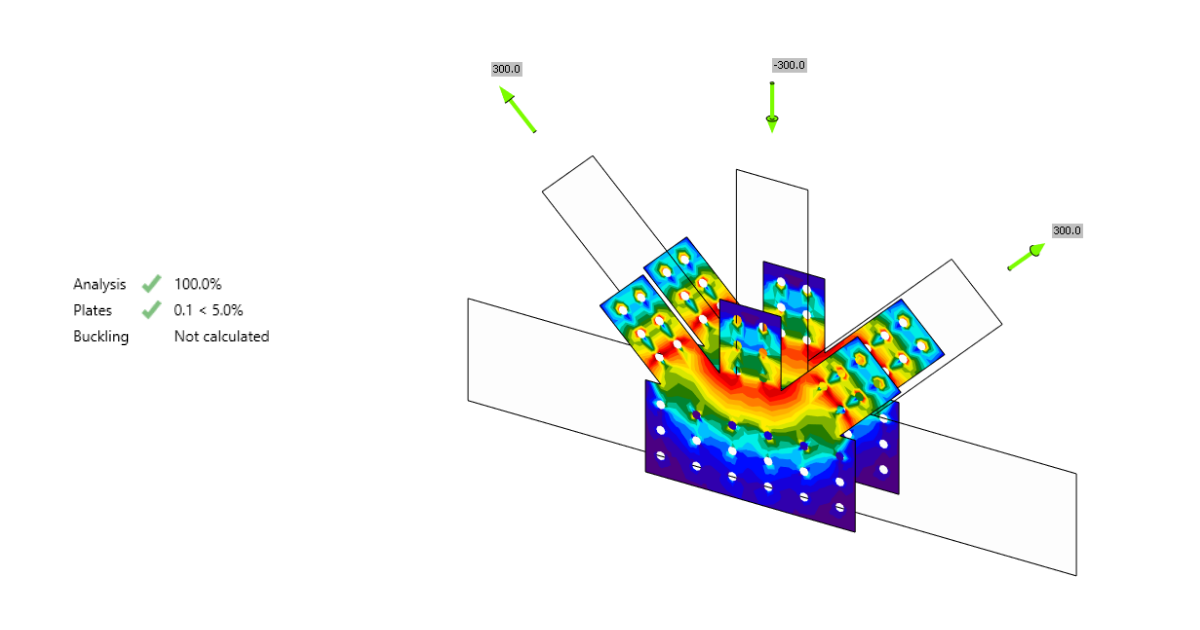
For those of you who are interested in steel-to-timber design, click here to read more about the timber connection and it can be solved within IDEA StatiCa Connection via our support centre.
Other articles on Gusset plates:
Other articles on Block Shear Failure :



